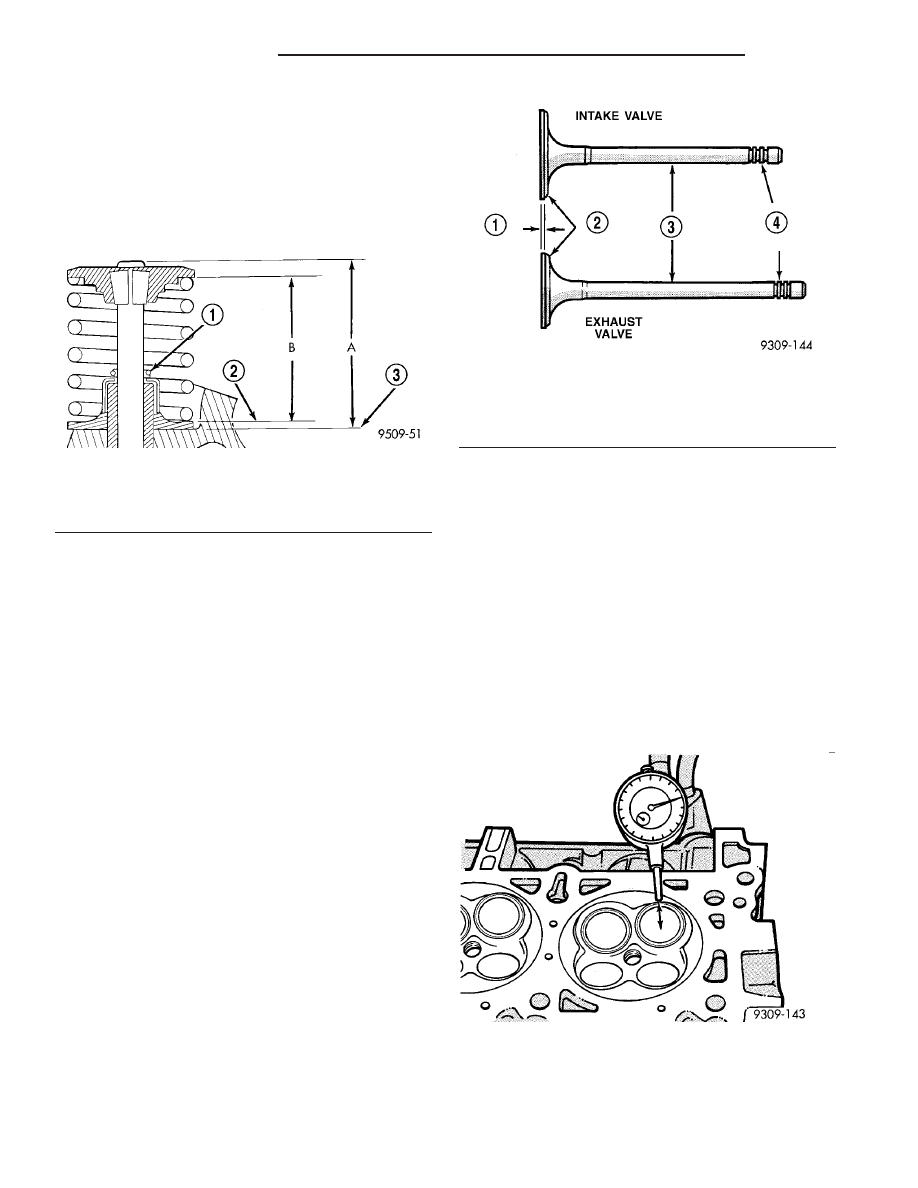Dodge Neon / Neon SRT-4. Manual - part 237

(9) Check valve tip to spring seat dimensions A
after machining the valve seats or faces. Grind valve
tip until within specifications. Measure from valve
tip to spring seat when installed in the head (mea-
surement A) (Fig. 46). For valve tip specifications,
(Refer to 9 - ENGINE - SPECIFICATIONS). The
valve tip chamfer is needed to be reground to prevent
seal damage when the valve is installed.
REMOVAL
(1) Remove valve spring. (Refer to 9 - ENGINE/
CYLINDER HEAD/VALVE SPRINGS - REMOVAL)
(2) Before removing valve, remove any burrs
from valve stem lock grooves to prevent dam-
age to the valve guides. Identify valves to insure
installation in original location.
(3) Remove valve(s) from cylinder head.
CLEANING
(1) Clean
all
valves
thoroughly
and
discard
burned, warped and cracked valves.
INSPECTION
VALVES
(1) Measure valve stems for wear (Fig. 47) approx-
imately 60 mm (2.36 in.) below the valve lock
grooves. For valve specifications (Refer to 9 -
ENGINE - SPECIFICATIONS).
NOTE: Valve stems are chrome plated and should
not be polished (Fig. 47).
VALVE GUIDES
NOTE: Replace cylinder head if stem-to-guide clear-
ance exceeds specifications, or if guide is loose in
cylinder head.
(1) Measure valve stem-to-guide clearance as fol-
lows:
(2) Install valve into cylinder head so it is 15 mm
(0.590 in.) off the valve seat. A small piece of hose
may be used to hold valve in place.
(3) Attach dial indicator Tool C-3339 to cylinder
head and set it at right angle of valve stem being
measured (Fig. 48).
(4) Move valve to and from the indicator. (Refer to
9 - ENGINE - SPECIFICATIONS)
Fig. 46 Spring Installed
1 - GARTER SPRING
2 - VALVE SPRING SEAT
3 - CYLINDER HEAD SURFACE
Fig. 47 Intake and Exhaust Valves
1 - MARGIN
2 - FACE
3 - STEM
4 - VALVE SPRING RETAINER LOCK GROOVES
Fig. 48 Measuring Valve Guide
9 - 42
ENGINE 2.0L SOHC
PL/SRT-4
INTAKE/EXHAUST VALVES & SEATS (Continued)